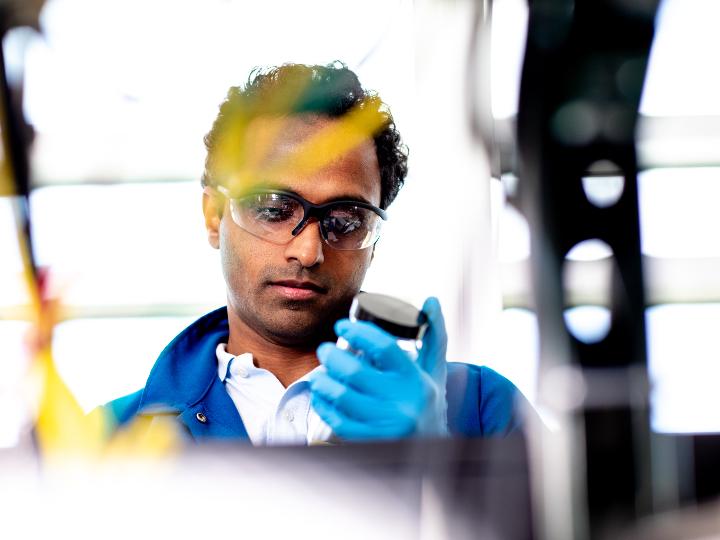Cerium oxide catalyst will remove oxygen, reduce processing requirements

Credit: University of Houston
Efforts to use biomass, including wood and agricultural products, have played an important role in the search for a sustainable alternative to fossil fuels for transportation fuels and chemicals. But biomass has high concentrations of oxygen, making it more energy and labor intensive to convert into those desirable end products.
Praveen Bollini, assistant professor of chemical and biomolecular engineering at the University of Houston, says a catalyst using bulk cerium oxide – the most abundant of the rare earth elements in the earth’s crust and already commercially available – can efficiently remove the excess oxygen, allowing biomass to be economically converted to fuels and chemicals. He was awarded a $364,984 grant from the National Science Foundation to build the catalyst and improve molecular-level understanding of the chemical and physical processes that occur when cerium oxide is used to remove the oxygen.
The oxygen is removed from the biomass through a process known as hydrodeoxygenation, which involves adding hydrogen. The hydrogen then combines with the oxygen to produce water as a harmless byproduct.
“The fuel value you get (after conversion) is dependent on the oxygen content. The lower the better,” Bollini said. “Fossil fuels pulled from the ground have very low oxygen content.”
Cerium oxide is already used commercially in automobile exhaust systems, he said, valued for its ability to take up and release oxygen at will. It hasn’t previously been used for biomass conversion, but he said a prototype synthesized in his lab can successfully remove oxygen from a sample of biomass and, when hydrogen is fed into the mix, convert the oxygen and hydrogen to water.
Bollini works in catalysis and reaction engineering, focused on making chemical transformations more energy and atom efficient in order to reduce both energy use and the release of carbon into the atmosphere.
The search has been ongoing for an inexpensive and easy to use catalyst that is also effective, selective in removing only oxygen and able to use hydrogen fed into the mix. Bollini said the cerium oxide fits all the criteria.
It is abundant, inexpensive and already well understood because of its use as an oxygen storage component in automobile exhaust systems, he said.
###
Media Contact
Jeannie Kever
[email protected]
713-743-0778
Original Source
http://www.




